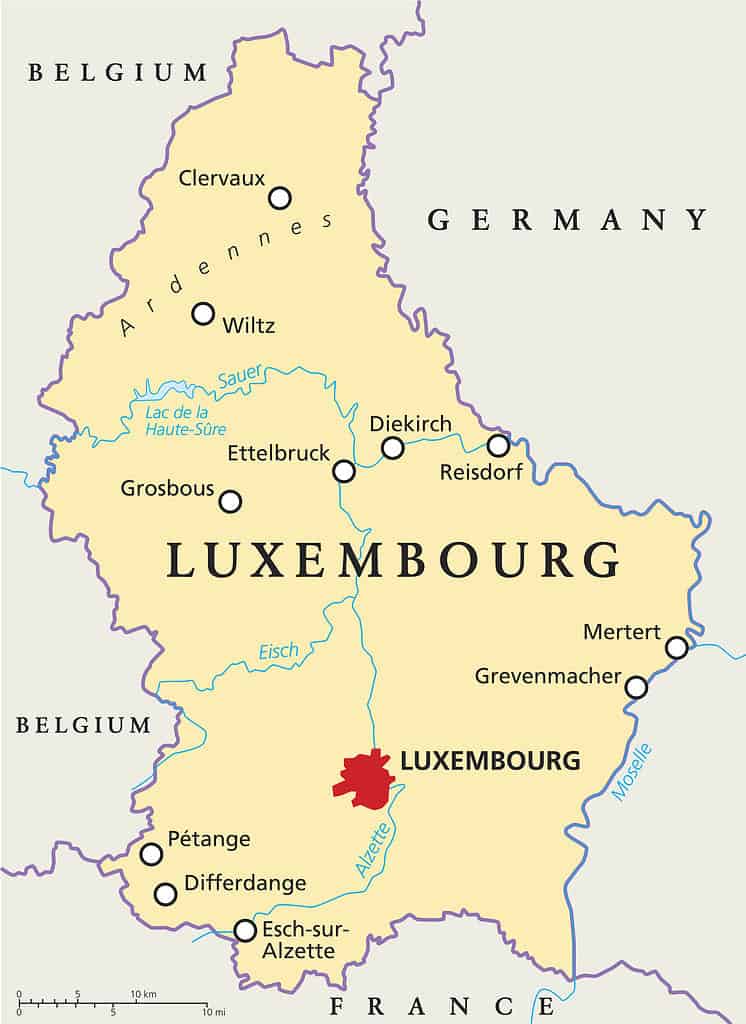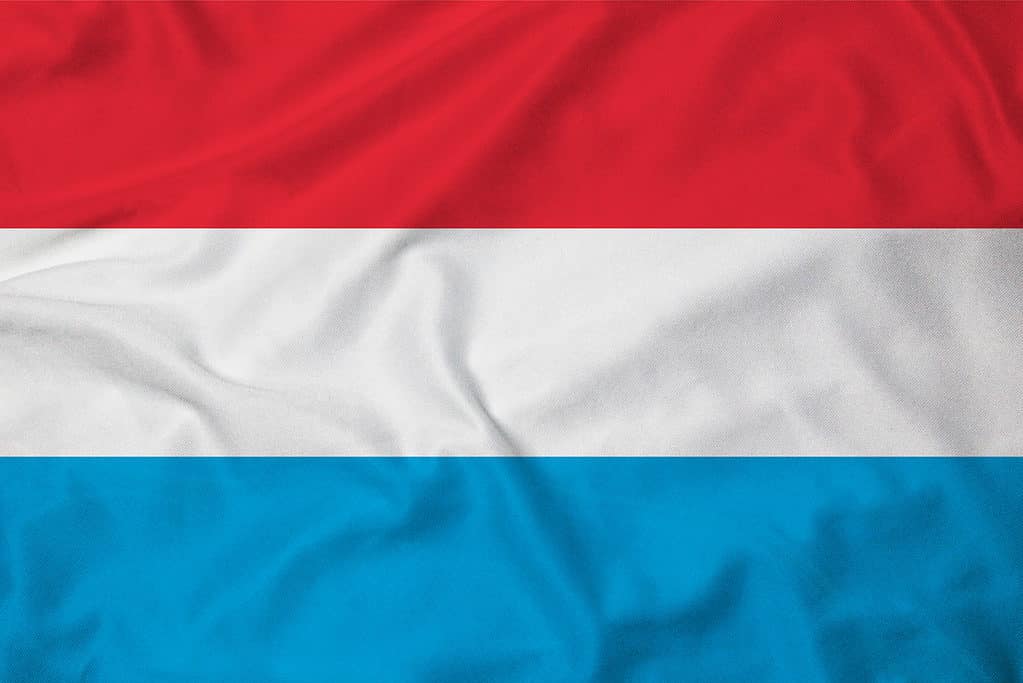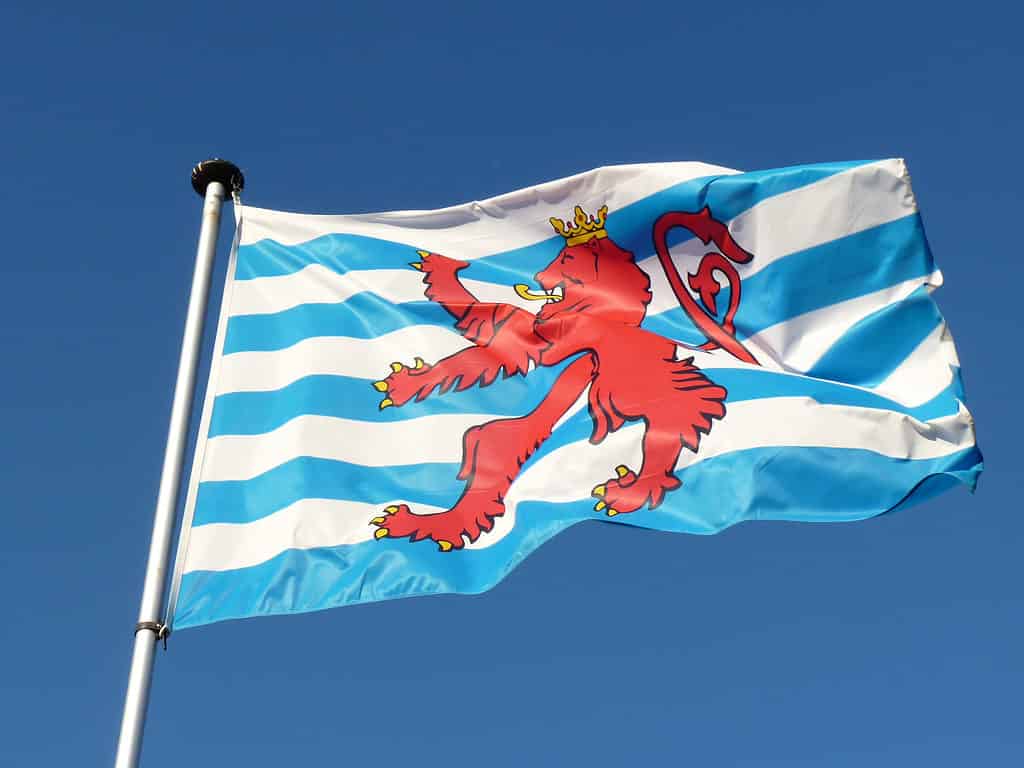Flags are flown all over the world and to many people, they are simple brightly colored pieces of fabric. However, flags are actually extremely important. They don’t just represent a place, but in many cases they can be a symbol of power, war, loss, or even act as a beacon of hope in times of hardship. Flags can have widely varied arrangements of colors and symbols, but each is distinctive to the place that it represents.
So, what does the flag of Luxembourg look like and what does it represent? Join us as we discover all of this and why there have long been calls for the flag design to be changed.
History of Luxembourg

Luxembourg is a small country bordered by Belgium and France.
©iStock.com/PeterHermesFurian
Luxembourg – officially the Grand Duchy of Luxembourg – is a landlocked country in Europe. Although it has a long history, Luxembourg looks vastly different today, not least because it has gone through three partitions. These have reduced its territory from 4,100 square miles to only 998 square miles. Its former regions now make up parts of Belgium, France, and Germany.
In its earliest form, Luxembourg dates back to around 963. However, the next few centuries saw the emergence of the House of Luxembourg – or Luxembourg dynasty – which was a royal family of the Holy Roman Empire. Although their rule was interrupted twice by the House of Wittelsbach, the House of Luxembourg ruled the country for the most part until 1437.
From 1039 to 1353, Luxembourg was the County of Luxembourg and then the Duchy of Luxembourg until 1797 which were both initially states of the Holy Roman Empire. However, the Duchy eventually became independent from it and formed a union with the Kingdom of Spain. During the Franco-Spanish war, France and England captured a large part of the Spanish Netherlands. As a result, they received 410 square miles of Luxembourg in a treaty in 1659.
In 1795 Luxembourg was annexed to France during the French Revolutionary Wars. It remained under French rule until the defeat of Napoleon. Upon his defeat, Luxembourg was freed from French rule and elevated to the status of Grand Duchy. However, an agreement between Prussia and the Netherlands saw Luxembourg lose a further 880 square miles and the rest of the country placed under the rule of the king of the Netherlands.
Belgian Revolution
The Belgian Revolution was a conflict between the United Kingdom of the Netherlands and the Independent Kingdom of Belgium. At the start of the Belgian Revolution in 1830 many people from Luxembourg joined the Belgians in making a stand against Dutch rule. They took control of large parts of the Duchy of Luxembourg, with the exception of the capital – Luxembourg City. Therefore, between 1830 and 1839 much of Luxembourg was considered to be a Belgian state.
Luxembourg’s final and largest loss occurred in 1839 following an intervention in the form of the Treaty of London. A number of proposals had already been made and rejected by one side or the other. The first proposal was that all of Luxembourg remain under the control of the Netherlands. However, it was eventually decided that Luxembourg be split between the Netherlands and Belgium, resulting in the loss of 1,830 square miles to Belgium.
Although Luxembourg achieved independence in 1867 it still had much uncertainty and unrest to navigate – particularly through the two world wars – before it became the country that we know it today.
History of the Flag of Luxembourg

The flag of Luxembourg was officially adopted in 1972
©iStock.com/Royal Graphics
The flag of Luxembourg is a tricolor consisting of horizontal bands of red, white, and blue. It was officially adopted in 1972, with an amendment made in 1993 to standardize the colors. However, although it was not officially the national flag until 1972, the flag was actually first used in 1830 when the use of the national colors was encouraged during the Belgian Revolution. The tricolor then became the de facto national flag in 1848.
Luxembourg had not had a national flag until this time, but the colors are based on an ancient banner. This banner featured a red lion on a background of blue and white stripes. It represented the County and then the Duchy of Luxembourg between 1242 and 1443. This banner uses the image from the coat of arms of the House of Luxembourg. The House of Luxembourg was one of the most important and influential forces during the 14th century. As a result, the national colors represent power, revolution, determination, and courage.
With the exception of the period of the two world wars, the tricolor remained the unofficial flag of Luxembourg until its official adoption.
Civil Ensign

While not its “official” flag, the civil ensign flag is very popular in Luxembourg.
©iStock.com/bofotolux
Although the tricolor has represented the country for many years, arguably the most popular flag in Luxembourg is the civil ensign flag which is known as De Roude Léiw, or the Red Lion. This flag is based on the ancient coat of arms and banner from the House of Luxembourg. It features a red lion with golden teeth and claws and a golden crown on ten alternating bands of blue and white. The design has largely remained unchanged since medieval times. It is considered to be one of the most traditional symbols representing the heritage of the people of Luxembourg.
This ensign is used on all ships registered in Luxembourg. This is to avoid any confusion which might arise from the use of the tricolor flag when seen at a distance. This is because the tricolor flag of Luxembourg is extremely similar to the flag of the Netherlands. However, the Luxembourg flag is longer and has a much lighter red and blue stripe.
There has been much debate about changing the design, with several petitions made, although none have been successful. Many people advocate changing the national flag of Luxembourg to the civil ensign flag, which is more widely used at sporting events than the tricolor. However, so far no change has been forthcoming and the tricolor remains in use today.
Up Next
- Every Flag in the World: Photos, History, and More
- 26 Countries with Tricolor (Triband) Flags
- The Flag of Spain: History, Meaning & Symbolism
- The Flag of the Netherlands: History, Meaning & Symbolism
The photo featured at the top of this post is © iStock.com/Royal Graphics
Thank you for reading! Have some feedback for us? Contact the AZ Animals editorial team.






